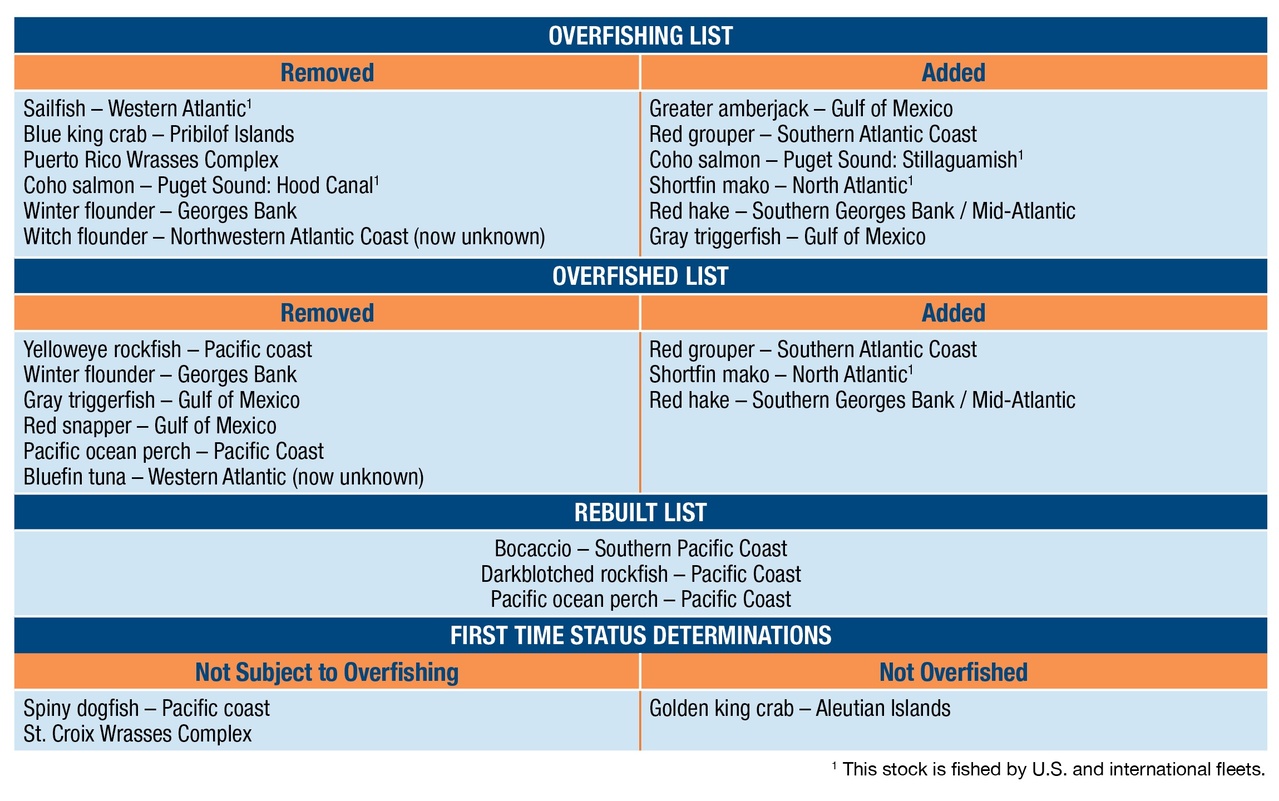NOAA Fisheries has released the 2017 Report to Congress on the Status of U.S. Fisheries managed under the science-based framework established by the Magnuson-Stevens Fishery Conservation and Management Act (MSA).
At the end of 2017, the overfishing list included 30 stocks and the overfished list included 35 stocks. Overfishing remains near all-time lows and we reached a new milestone with the number of overfished stocks at the lowest level ever—just 15 percent of assessed stocks. The number of stocks rebuilt since 2000 increased to 44. NOAA Fisheries tracks 474 stocks or stock complexes in 46 fishery management plans. Each year, assessments of various fish stocks and stock complexes are conducted to determine their status. These assessments include stocks of both known status and previously unknown status. Based on assessments conducted by the end of 2017, six stocks were removed from the overfishing list and six were added. The additions are the result of stock assessments or data showing catch was too high, including international harvest on certain stocks that the United States has limited ability to control. Six stocks were removed from the overfished list and three were added based on stock assessments that indicated population sizes were too low. As required by the MSA management framework, the councils are developing management measures to end overfishing and rebuild all stocks added to the overfishing and overfished lists.
Specific changes to the status of stocks in 2017 include:

Benefits of Sustainable Fisheries Management
Sustainable fisheries management is an adaptive process that relies on sound science, innovative management approaches, effective enforcement, meaningful partnerships, and robust public participation. Sustainable fisheries play an important role in the nation’s economy by providing opportunities for commercial, recreational, and subsistence fishing, marine aquaculture, and sustainable seafood for the nation. Combined, U.S. commercial and recreational saltwater fishing generated more than $208 billion in sales and supported 1.6 million jobs in 2015. By ending overfishing and rebuilding stocks, we are strengthening the value of U.S. fisheries to the economy, our communities, and marine ecosystems.
Discover more from CAPE CHARLES MIRROR
Subscribe to get the latest posts sent to your email.
Leave a Reply